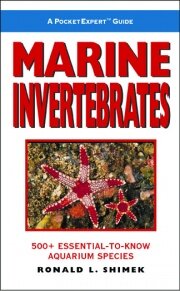Chapter 1: PocketExpert Marine Invertebrates
From Microcosm Aquarium Explorer
Conditions of Maintenance
Tropical reef animals have a particular, and reasonably precise, set of conditions in which they will do best.
Relatively few of the animals we keep are found at conditions outside these normal ranges, and relatively few of them do well at conditions outside these ranges. Because of this, a word about marine animal distributions is in order. Marine animals often have a larval dispersal phase that lives, swims in, or is distributed in the plankton. Because of this, they have the potential of spreading very widely.
Most animals have a range of conditions under which they may survive. For example, some corals can survive from temperatures of 68°F (20°C) to 90°F (32°C), and they are often found in areas where the temperatures reach the extremes or are predominantly shifted to either the colder or the hotter parts of their range. Animals living in such marginal environments are not thriving, they are simply surviving. The larvae that gave rise to these adults settled out of the plankton at such a site because other cues were acceptable. Once there, the animal is essentially stuck—literally, as it cannot get up and move. In the marginal environments, animals such as corals survive, but they reproduce poorly, if at all, and they grow slowly.
Wild Parameters
Most coral reefs have temperatures that range between 78°F (26°C) and about 86°F (30°C). The average temperature of about one thousand coral reefs spread throughout the world is about 81°F (27°C). Virtually all coral reef animals will do best within this range, and I consider the temperature range of 81 to 84°F (27 to 29°C) as the optimal and normal temperature to maintain all reef animals.
There is a similar range for acceptable salinity, but it is a narrow band, around 35 to 36 parts per thousand (ppt). At normal reef temperatures, this is a specific gravity of about 1.025 to 1.026.
On coral reefs, the pH will vary from about 8.0 to about 8.5 depending on the time of day and current patterns. The stability of pH on a reef and in aquariums is due to the stability-enhancing effects of dissolved calcium and carbon dioxide. These materials are assessed in aquariums by the monitoring of both calcium and alkalinity. Depending upon the animals kept in a given tank, it will be necessary to supplement these materials regularly. This will replace the critically important dissolved calcium and will ensure that the pH remains within a normal range.
Lighting is more variable and dependent upon habitat. This will be discussed within the context of each animal group. Unless otherwise noted, the basic conditions for all animals discussed in the book are listed in the paragraphs above. To provide a quick method of assessing suitability of the animals discussed in this guide, I have used two, very subjective, indices.
Aquarium Suitability
This indicates whether an animal is suitable for a reef tank, or not suitable at all. Note that animals may be easy to keep, but not suitable for captivity for a number of reasons. As an example, the textile cone shell, Conus textile, is quite easy to keep in an aquarium. It also can sting and kill people. I consider this an attribute that disqualifies the animal as a “good” aquarium pet.
Reef Aquarium Compatibility
This category assesses the ability of the organism to survive in reef aquarium conditions. Many animals, such as the beautiful Dendronephthya species, would be suitable for reef aquariums, if only we knew how to keep them alive in the tank. However, as we cannot maintain the animals, they should be left on the reef, and are given a poor compatibility rating.
From: PocketExpert Marine Invertebrates









